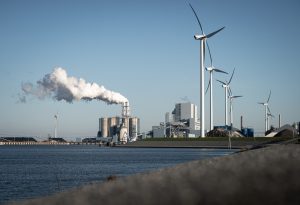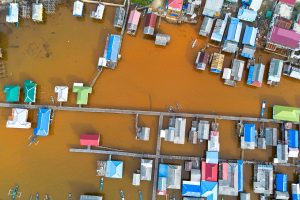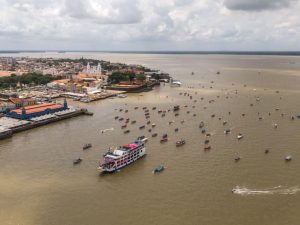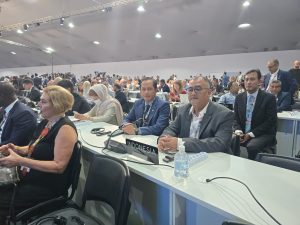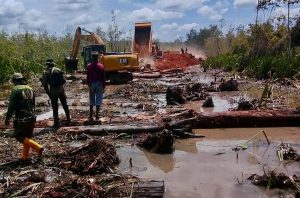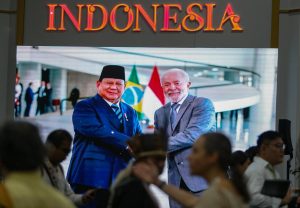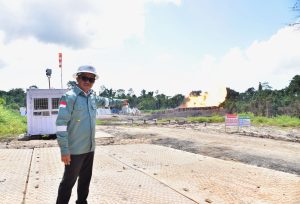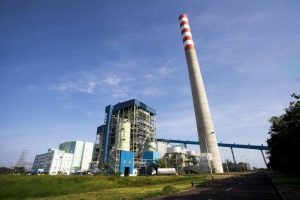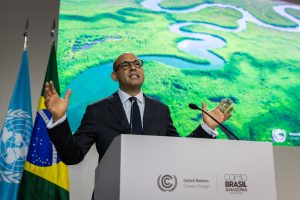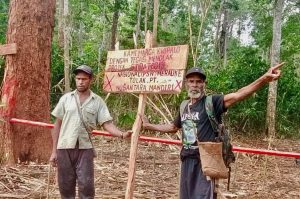JAKARTA – Indonesia’s net zero emission target may be delayed if CO2 peak emission is not reached by 2027, analysts said Thursday (17/2). According to Indonesia’s Ministry of National Development Planning (Bappenas) scenario, the country can reach net zero emission (NZE) in 2045 or 2050 as long as there is a peak in 2027 at the latest. This means, the amount of CO2 emissions should reach its maximum amount in that year, and should subsequently decrease.
“Even one year’s delay in reducing emissions could cause the NZE to go back 5–10 years,” said Doddy S. Sukadri, Executive Director of Mitra Hijau Foundation and a former negotiator for Indonesia at UN Climate Change Conferences. He added that the government needs to carefully calculate their carbon neutrality target.
“If the new peak is reached in 2033-2034, then NZE will occur in 2060-2070,” he said.
Separately, Bappenas Director for the Environment Medrilzam stressed the importance of collaboration. He said that achieving net zero emissions is not only related to climate change or the environment, but also economic transformation.
“Our steps and ambitions to achieve net zero emission are in line with future economic transformation. One of the backbones of the economy is low carbon development. Once we achieve green economy and it’s derivations, we will be free from the middle income trap in 2045,” explained Medrilzam, in a webinar held recently by the Indonesia Business Council for Sustainable Development (IBCSD) and the Indonesian Chamber of Commerce and Industry (KADIN).
He further said that the amount of investment that must be prepared to welcome the green economy era will not be able to be shouldered by the government alone. Bappenas calculated that it takes about an average of USD 1 trillion for 2021-2060 and additional costs of 3-5 percent of GDP in the current year. This means that it requires investment and cooperation from the private sector to make it happen, said Medrilzam.
Hitachi supports Indonesia to reach carbon neutrality target in 2060
PT Hitachi Sakti Energy Indonesia President Director Michel Burtin said, the current energy transition requires a stronger and smarter network to integrate various energy sources, including optimizing the use of new and renewable energy (NRE). Realizing this target requires intensive efforts to achieve the integration of renewable energy on a large scale.
“Hitachi Energy is ready to support the Government of Indonesia’s plan to realize the energy transition to achieve the carbon neutrality target by 2060,” Michel said in a written statement, Wednesday (16/2).
He said, most of the existing grids are aging, and the current electricity grid must be more flexible, efficient, and reliable to support future renewable energy demand and supply, and also be able to cope with grid complexity. At the same time, there is also a need to significantly upgrade and expand the electricity grid with a high level of digitization to accommodate the rapid growth of electricity demand from the transportation, industrial and building sectors.
He said that Hitachi Energy is committed to support Indonesia through the integration of renewable energy such as solar and wind energy into the grid system, by providing pioneering technologies such as Digital Substations, Modern Energy Management Systems, and Flexible Alternating Current Transmission Systems (FACTS).
This integration is carried out to help Indonesia overcome power quality problems in the transmission and distribution network. Hitachi Energy also has a High Voltage Direct Current (HVDC) system to connect inter-island electrical interconnection networks, such as the Nusantara Super Grid concept.
So far Hitachi Energy has also been involved in several energy transition projects in Indonesia. For example, connecting a geothermal power plant near Rantau Dedap, South Sumatra, by providing 220 Megawatts of carbon-free electricity to the Sumatra grid.
In addition, Hitachi Energy has a research and development (R&D) center in Bali that is developed and managed by local engineers. Burtin explained that the R&D Center is in line with the government’s plan to improve the quality of local human resources.
“So far, we have played an important role in the growth of clean energy in Indonesia, involved in landmark projects and helping prepare the nation’s future talents. We will definitely continue to support this country for a sustainable energy future,” he said. (Hartatik)


